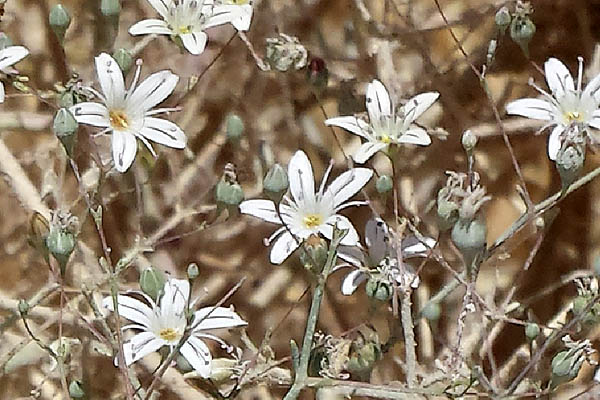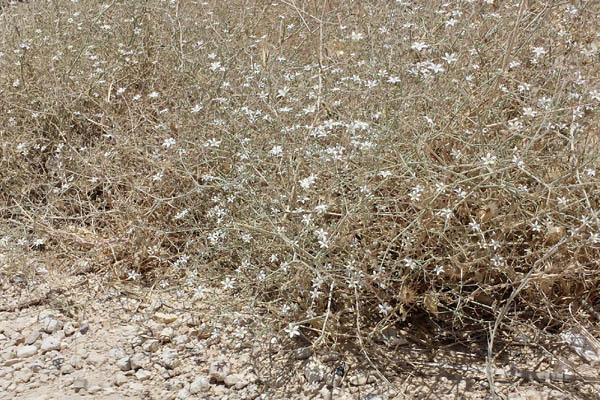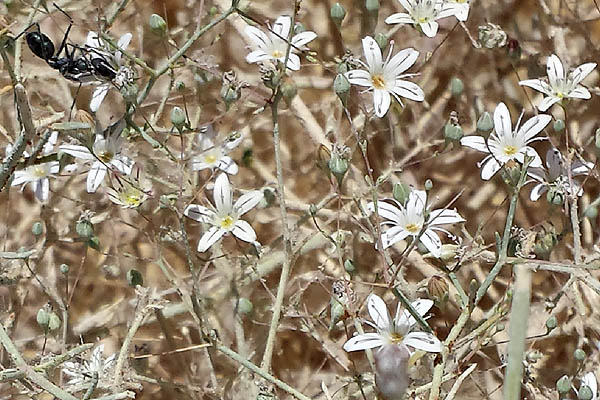Hebrew: גבסנית ערבית, Arabic: سليح –خمسات-عشب الذهبي- رقيجة.
| Scientific name: | Gypsophila capillaris (Forssk.) C.Chr. | |
| Synonym name: | Gypsophila arabica Barkoudah | |
| Common name: | Desert Baby's Breath | |
| Hebrew name: | גבסנית ערבית, גפסנית ערבית | |
| Arabic name: | سليح –خمسات-عشب الذهبي- رقيجة. | |
| Family: | Caryophyllaceae, carnation family, ציפורניים |

|
| Life form: | Chamaephyte | |
| Stems: | Up to 10-80 cm, woody base, erect stems | |
| Leaves: | Opposite, simple linear to lanceolate below, linear above, smooth margin | |
| Inflorescence: | Lax panicles | |
| Flowers: | Pedicels capillary, up to 33mm; calyx campanulate-obconical, 2-3mm; White petals with lilac to purple veins, oblong-elliptical, c. 2x as long as the calyx | |
| Fruits / pods: | Capsule, globose; usually 2 or more seeds, smooth to tuberculate | |
| Flowering Period: | April, May, June, July, August, September, October, November | |
| Habitat: | Desert, Shrub-steppes | |
| Distribution: | Mediterranean Woodlands and Shrublands, Semi-steppe shrublands, Shrub-steppes, Deserts and extreme deserts | |
| Chorotype: | Irano-Turanian | |
| Summer shedding: | Perennating |

Derivation of the botanical name: Gypsophila, Greek γυψοϛ gypsos, gypsum; philos, a friend; a reference to the gypsum-rich substrates on which some species grow. capillaris, capillus, hair; hair like. arabica, of Arabia. The Hebrew name: גבסנית, gybsanit, Gypsophila, formed from gypsum; from גפסים (= mortar, plaster, gypsum), which, together with Arabic jibs probably derives from Akkadian gassu; Greek: gypsos ( = chalk), is of Semitic origin.

|